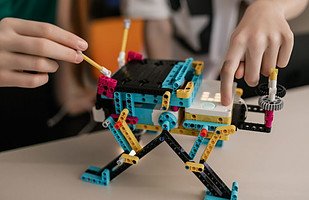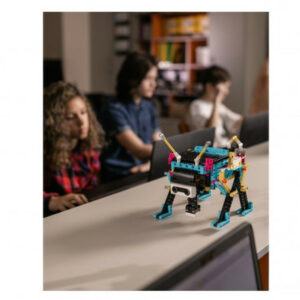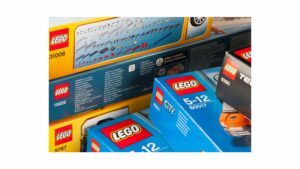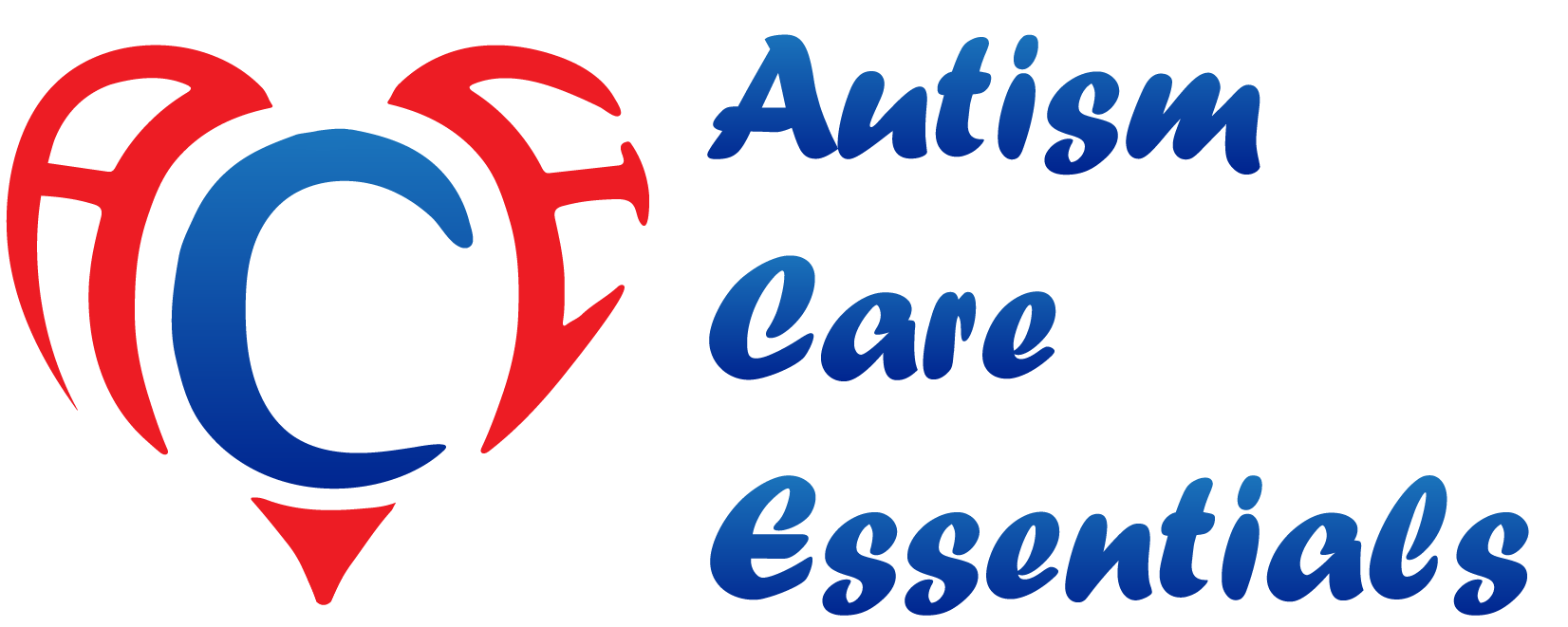Educational toys can make positive impacts on the learning experience of children with autism. Lego therapy activities showcase how great those impacts can be.
What is LegoTherapy
Lego therapy is a Lego-based structured program. It was originally created to improve communication and social skills for children with autism and other children who need to improve those skills. It is mostly used in educational settings by professional therapists or facilitators of independent therapy programs. Parents can learn to use it at home with their autistic children and their siblings.
Lego Therapy is recommended for children aged 5-17 who need the improvement of relatable skills of Lego-centered activities. It works better for the children who are already interested in playing Lego since they are more motivated to learn communications, joint attention, and teamwork through activities they already enjoy. They also can use their building skills to cooperate with other children to build new Lego models.
When children love Lego-related activities, Lego therapy can be designed to improve other therapeutic needs as well.
Benefits of Lego Therapy
Lego therapy provides a lot of benefits beyond what was initially designed for. Children sustain more or fewer benefits from the following list and beyond.
- Children can develop some Language in colors, numbers, sizes, and propositional words through their interest in Lego.
- Turn-taking is a simple but important social skill that children are reinforced to do during therapy. Children will take turns doing different roles during the building process.
- Joint attention is another skill that children are getting trained unconsciously during the therapy. They would need to pay attention to the same Lego model building instruction and attend to the same Lego model building process.

- Children learn to communicate through requesting the needs and wants nicely.
- It improves children’s cognitive skills from identifying, matching the bricks to following directions for all related activities.
- Children learn to control their emotions during the therapy. They might be disappointed when they don’t have their desired role right away or might be frustrated when the model collapses, but they learn to wait for their turn or to rebuild the model more properly.
- Children learn to focus and pay attention to details during the process of building. In order to build the model successfully within the limited time, children need to focus on the task and pay attention to what exact little pieces are needed for the next step of building.
- It improves fine motor skills and finger strength. It is a most understandable skill when parents encourage their children to play with Lego.
- It promotes friendship and teamwork.
- It helps to develop children’s creativity and boost their confidence.
Lego Therapy Rules
Lego therapy rules are established flexibly based on the ages and abilities of children in the group. The rules should be consistent and fair to all members of the same group. Visual rules help the children refer to them easier and more consistently. When setting up the rules for the group, you could also ask the parents for their ideas besides referring to the following list.
- Do not put Lego® in the mouth, nose, or ears of yourself or others.
- Do not throw or stomp on the Lego.
- Take turns with different roles every 1/3 of the building process.
- You might have to share a role or take more than one role when needed.
- Every role has its duties. Engineers use/create Lego instructions with Suppliers and Builders. Suppliers locate the right pieces with the instructions from Engineers and give them to Builders. Builders construct the model after they receive the pieces from suppliers and follow the building instructions from the Engineer.
- Listen, communicate and be patient with each other.
- Teamwork and joint effort are more important than finished products.
- At the end of the session, pictures of the Lego models should be taken before they are allowed to be dismantled.
Lego Therapy Activities
There are two ways to explain Lego therapy activities. It can be the related activities that are involved during one therapy session. It can also mean the activity ideas from different Lego models or create your own Lego models with instructions.
Suggested Activities in One Lego Therapy Session
- Warm up the spirit and fingers with a song. A song that is related to Lego is a good way to start a therapy session. You can use Everything is Awesome from Lego Movie works well for the group with older children. You can also create a club theme song using the melody from popular children’s songs like“Twinkle, Twinkle, Little Star”. The lyrics of the theme song can be words that rhyme with bricks, rocks, etc.
- Review and learn some Lego vocabulary to describe the bricks. That makes it easier to communicate and locate pieces.
- Introduce a step-by-step way of building the Lego and how many total steps are involved in the current model.
- 1st shift start building the model. Everyone works under the assigned roles for around 1/3 of the steps.
- 1-minute breathing and/or body movement break.
- 2nd shift with rotating roles continued building the model for another 1/3 of the total steps
- 1-minute breathing and/or body movement break.
- 3rd shift with rotating roles finishes building the model.
- Take a picture of the project (It usually ends with a finished model through a well-designed therapy program unless purposely designed differently) and allow the builders to decide what to do with the new build model.
- Freestyle play. Members can choose to build something with their own imagination. No instructions from other members are needed.
- The program director scores the report card for each member.
- Awards are given out to well-participated members.
The Activities Ideas from Different Models
Lego therapy program usually uses more than one model. You can buy some Lego models in boxes with existing instructions or you can design the simple ones on your own. You will need to write out the instructions accordingly. The following are actionable ideas when choosing a model.
- Use Lego box that children have not played by themselves before.
- The difficulties of the building instruction for the model should be developmental-age appropriate. It is easier if everyone in the group that are around the same developmental age. For autistic children around age 6, a 43-pcs Spiderman and Sandman set is more suitable than a 200-pcs Ice-cream Truck set.
- For therapy purposes in achieving success, the easier ones are better than harder ones when comparing them for the same group.
- Consider more popular topics/items for the majority of members of the group.
- It might draw more interest to build something for coming holidays or events.
- You can use Duplo, Lego Junior kits if the children don’t have enough fine motor skills. Other construction kits might fit the different needs better if there are instructions to follow.
Lego Terms to Introduce in Lego Therapy
Depending on the understanding level of the members, this part of the activity can be educational but might be boring to some kids. Try to learn a few words each session to make it short and interesting. Besides names for the shapes, colors, the following questions might help spark some curiosity for some children to learn new terms. Be sure to hold up the pieces or the picture of the model while asking the questions.
- What is the most important part of Lego?-Bricks

- The height of 3 plates equals the height of one brick, which one is thinner, a brick or a plate? – A plate is thinner than a brick.
- How do we call those “bumps “on top of bricks or plates?-studs
- What do you say about the plates without studs?- tiles
- Can you refer a base plate in this model to what part of the house? –foundation- That’s right. A base plate is a thin and large plate where you can build things on them just like the foundation for a house.
- How do we say the different sizes of bricks? -“smaller number” by “same or bigger number”-1by1, 1by2, 2by2, 2by3, 3by4, etc.
The list can go on from doors, windows, fences, wheels, slopes, arches, wedges to irregular sizes and shapes like “the curved brick” “the plate with rail”. Advanced terminology like “the profile brick” will be only introduced to the advanced groups who are interested in learning those terms.
As the initial intention of this article is to demonstrate how Lego Therapy uses an educational toy that can benefit children with autism. We also learn that sky is the limit when using educational toys for learning purposes. It is up to us to use one brick at a time to help them build the tower of knowledge.
We appreciate your thoughts and please share your experiences with educational toys with us.

Truth said, when I first heard about Lego Therapy, I did not think that it was a legit thing at all. It seemed like somewhat of a scam to me that people buy into similarly as they sometimes do with physical or digital products.
I had zero awareness that so much actually goes into the notion of playing with legos. I mean, to that end, the potential benefits absolutely make sense. I really appreciate you for laying out the rules so well. I will have to print them out. Also, I genuinely loved the guidelines for the therapy session. I will have to print those, too. And I’m happy they promote the notion of awards as well. Because good and great behavior need to be encouraged. It just naturally makes the kids repeat it more.
Yeah, and I agree. Introducing the lego terms will bore some of the kids to death. 🙂
Thank you.
Thank you so much for your heartfelt comments. I am glad that you found it useful. As I mentioned to another reader, creating proper rules and steps is the biggest trick for the activities for children with autism. I am always here if you need any help.
Lego Therapy Activities for Kids with Autism sounds like a great tool and toy for these children. They are reaping the benefits of building something. And since they are building something with another child, there are rules of conduct to be learned and followed.
What other activities do you strongly recommend for kids with autism?
Thank you so much for the comments. I found some other activities like jumping on a trampoline, sitting scooter(prefer connect-A-scooter), musical chairs, memory games(with the items that the children like from food items to toys), and some easy board games work great for them.
Creating appropriate rules and steps for them is the biggest trick about activities for children with autism.
Please let me know if this is helpful for you.
I believe this can be an opportunity to bond with your child whilst building different shapes and this can be a very good way to create friendship amongst children, the more time they spend to together the easier it will be to relate to each othere and understand each other. It’s also a way of building trust .
Some of the children with autism find it hard to trust others and this is a very good way to build a relationship that is not forced.
Thank you so much for the comments. I hope you enjoyed reading it.